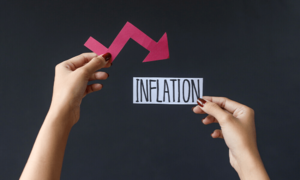A budget that at once seems overambitious
Overambition is the call of the day. Concrete measures to support high taxation growth—something the country direly needs and the Budget FY2025 itself has astoundingly targeted—are entirely missing.
Aurangzeb and team did well to negotiate tough IMF conditionalities by navigating through taxation demands on agriculture, sales tax on sugar, and higher taxes on salaried individuals among other hard-hitting numbers.
At the same time, the home team conceded on immovable property taxes and higher taxes on non-salaried individuals.
The sacred cows of retailing and trading, however, were kept largely protected.
On the expenditure side, there is a generous increase in government employees’ salaries, and doubling of the federal development budget.
It seems there are deliberate efforts to protect the PML-N core constituents from new taxes while the axe falls on exporters and formalized small and medium enterprises.
Overall, it appears that the Dar-phenomenon is peeking through the budget presented by finance minister senator Aurangzeb.
The challenge would be to meet 40 percent growth budgeted in FBR revenues. The clarity in the budget is missing on how to achieve nearly 50 percent growth in direct taxes and 35 percent in sales tax. The numbers are just not adding up.
The initial proposal from the IMF had a number of new measures and higher incidences of taxes on existing base.
However, the government managed to tackle these steps. The surprising part is there is no change in the FBR target of Rs12,970 billion. Either these targets will be missed or a mini budget is in the offing over the next few months.
One area where the government stood strong is on the imposition of normal tax rate on exporters. The minimum tax on revenues would no longer remain the full and final tax.
All income should be treated equal. Exporters may have fair demands on having energy and working capital on competitive rates. Once they make sales and earn money on businesses operating in Pakistan, they should pay their fair share of taxation.
The horizontal equity demands everyone to pay due share of income tax irrespective of the kind of income they are making. The tax should be uniform and non-predatory.
That equity is missing for non-salaried persons where the government has imposed maximum slab of 45 percent on non-salaried persons. They might have doctors, lawyers, accountants and other consulting professionals in mind while imposing this tax.
But the government did not lend any thoughts on how this would affect the tax-compliant SME sector. Small business and partnerships are now liable to pay higher taxes than large companies and salaried individuals. How can the government create such an inequality in income tax?
The equity is also missing when it comes to retailer and wholesalers, agriculture and other avenues.
The only notable tax measure is to bring higher WHT on non-filers in the supply chain. The philosophy of targeting non-filers is faulty and can have an opposite effect on formalization.The objective should be to do away from it. In any case, the market may price-in this tax, and therefore, this would have inflationary consequences.
The budget is deemed to be market friendly. There was a proposal of treating capital market income as all other incomes by imposing normal income tax on them. However, the government did not impose it.
There are no additional taxes on most of the sectors listed on the stock exchange. A bull run is likely to continue.
The non-tax revenues are savior for the government which is expected to give SBP Rs2.5 trillion in profits. The second big source is petroleum levy which has increased to Rs80/liter to generate Rs1,080 billion.
These are not part of the divisible pool and would help to lower the fiscal deficit.
However, to achieve the fiscal deficit target of 6.9 percent of GDP, new measures must be taken in the FBR taxation domain and development budget to be curbed significantly.
Copyright Business Recorder, 2024
Ali Khizar is the Director of Research at Business Recorder. His Twitter handle is @AliKhizar




























Comments
Comments are closed.